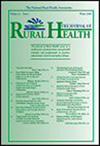Increasing access to orthotic and prosthetic care in rural communities: Satisfaction with the Department of Veterans Affairs Mobile Prosthetic and Orthotic Care Program
Abstract
Background
In the Veteran's Health Administration (VHA), rural Veterans who need orthotic and prosthetic (O&P) care typically travel to urban VHA medical centers (VAMCs). This presents a barrier to receiving O&P care, as travel may be burdensome due to medical or psychosocial issues. The VHA Mobile Prosthetic and Orthotic Care Program (MoPOC) removes access barriers to VHA O&P care by providing care in rural VHA clinics or in Veterans’ homes. The goal of this evaluation was to understand if Veterans are satisfied with access to MoPOC care, MoPOC clinicians, and impacts of care.
Methods
We conducted a convergent mixed methods evaluation with a satisfaction survey and qualitative interviews among Veterans who received MoPOC care. Surveys were analyzed descriptively. Interviews were analyzed using rapid matrix analysis.
Results
We received 598 survey responses (36% response rate) from six MoPOC sites and conducted 35 interviews. Findings included high Veteran satisfaction with MoPOC clinicians, high satisfaction with MoPOC care, improved access to care, allowing Veterans to stay in the VHA for care, positive impacts on quality of life, and challenges related to timeliness of device delivery.
Discussion/significance
Veterans were satisfied with MoPOC and MoPOC increased access to care. Many Veterans reported that they would not have received O&P care without MoPOC. This, along with the perceived quality of life impacts, indicates that expanding access to VHA O&P care in rural areas benefits Veterans. Many Veterans preferred to receive care in the VHA, suggesting programs like MoPOC are preferable to outsourcing care to non-VHA settings. Ensuring timeliness of device delivery is a key challenge, and it is unknown how satisfaction of timeliness within the VHA compares to satisfaction with timeliness of device provision in other settings.

 求助内容:
求助内容: 应助结果提醒方式:
应助结果提醒方式:


